MO Tested: Shoei GT-Air Helmet

A do-it-all helmet, suitable for almost any motorcycle
As you probably know, taking pictures on motorcycles is part of the job as a moto-journalist. Being the narcissistic type we are, we moto-reviewers typically like getting photos of ourselves on motorcycles as it’s our time to ham it up for the camera – pulling wheelies, dragging a knee, smoky burnouts, whatever the situation may present. The best time for photos, however, is a small window roughly 60 minutes before sunset (or roughly 60 minutes after sunrise if you’re an early bird), often called the “Golden Hour.”
While photos are often best lit during the Golden Hour, once that time passes it often means we’re stuck in the dark, wearing helmets with dark visors. And if there’s one thing we, the MO staff, are more than narcissistic, it’s lazy. Carrying around a clear shield for our helmets whenever we go on a shoot is annoying, then having to change it out in the dark once the sun goes down is even more so. Cue the angry groans from Tom if the shield changing mechanism is a PITA to operate.
Situations like this are why we’ve come to love helmets with integrated flip-down sun visors. Having both a dark and clear shield with you at all times, accessible with just the flip of a switch is a godsend. But not all lids with integrated visors are created equal. Shoei’s GT-Air, however, is how you do it right.
What Makes This So?
A comfortable helmet is a safe helmet, and the GT-Air is one of the most comfortable in my stable of lids. The neckroll is tight, but once through, the EPS liner and the removable, washable sweat-wicking interior material covering it practically conforms to the shape of my intermediate-oval head. It’s a tight fit, but a comfortably tight fit – just as it’s supposed to be. The cheek pads are thinner than the ones seen in other helmets, but it’s firm texture solidly cradles my cheeks right under the cheek bone. If you need a more tailored fit, Shoei also sells cheek pads and center pads that are either thinner or thicker than the stock unit. As a bonus, the pads already feature cut-outs for communicator speakers and grooves to accommodate those who wear glasses while riding. Install the enclosed chin curtain, and the interior of the GT-Air feels like a cocoon, separating you from the elements.
It’s a feeling that’s carried on once you’re moving, as virtually zero unwanted wind enters the helmet, not even through the faceshield, as it’s sealed securely. One of Shoei’s highlighted features of the GT-Air is how quiet it is – a trait I quickly picked up on despite the fact I wear earplugs no matter what helmet I’m wearing. It’s calm and pleasant inside the GT-Air, making it a great touring helmet for long-distance riders.
Another boon no matter how many miles you log is the GT’s ventilation system. A large chin vent, top vent, and rear vent are all easily operable by gloved hands and feature three positions: closed, half-open, and fully open. And unlike lesser lids, you can actually feel the airflow through the vents, thanks in part to the channels built into the EPS liner specifically to channel air. A slight quibble, if I may: it’s hard to tell when air is actually exiting the rear.
Staying on the topic of air flow, wind tunnel testing was performed for optimum aerodynamics, and looking at the side profile one will notice the integrated spoiler built into the shell design, which is said to reduce lift and drag. More than just a bullet point on a marketing brochure, however, the GT-Air really does slice through the air. There’s no undue strain on my neck from unwanted buffeting, even when riding unfaired naked bikes (even though the GT-Air is marketed as more of a touring helmet). The good vibes continue when the head is turned to the side – say, when looking over a shoulder for a lane change – as the GT-Air stays planted.
It’s taken this long to get to the build quality and construction of the GT-Air because, well, it’s a Shoei. There’s really nothing to worry about unless you’re one of those concerned the helmet “only” has D.O.T. approval. I’m not one of those people. The GT-Air is constructed from a proprietary five-ply matrix of fiberglass, organic fibers, and resin. In all, three shell sizes are used to accommodate its six helmet sizes (XS – XXL). Shoei says the helmet’s shape needs to be raised slightly to make room for the flip-down visor, but also says shell thickness remains uniform throughout, without compromising the EPS liner. Without having given the GT-Air the ultimate test of actually crashing in it, I’ll take the company at its word that safety hasn’t been compromised.
Now we come back to the faceshield to bring us full circle. The CNS-1 shield protects from 99% of UV rays, while easily snapping on or off via Shoei’s simple spring-loaded shield change mechanism. The eyeport is rather large, and the 3D injection molding helps to ensure distortion-free vision through the shield. Helping to prevent fogging on cold rides, the shield is equipped to accept the Pinlock Evo system. On the few cold rides we’ve had here in Southern California, the Pinlock works as advertised, giving a fog-free view ahead.
As for the dark smoke flip-down sun visor, a simple lever on the side of the left side of the helmet moves the shield up or down and is easy to find and operate with a gloved hand. Like the main shield, the drop-down unit also blocks 99% of UV rays and is distortion free. Best of all, however, is it negates the need for a dark tinted visor to wear during the day. Saving you also from having to find a way to carry a spare faceshield around all day.
Yeah, I Like It
What’s not to love about a well-fitting helmet with a flip-down visor, supreme comfort, a quiet interior, functional vents, and excellent aerodynamics? As you can tell, the Shoei GT-Air really impresses when it comes to all-day touring comfort. It’s got all the features you’d want from a helmet, with the fit to match – assuming you’re of the correct head shape.
Of course there is one thing not to love: the price. With prices starting at $549.99 for solid colors, the tag jumps to $671 for colorways like the Dauntless TC-1 pictured here. That’s a lot of coin for a helmet and only you can decide if the cost is worth it. However, if your dome is the right shape and you’re looking for the right lid to wear on your Iron Butt attempt, the GT-Air deserves to be in the conversation.

Troy's been riding motorcycles and writing about them since 2006, getting his start at Rider Magazine. From there, he moved to Sport Rider Magazine before finally landing at Motorcycle.com in 2011. A lifelong gearhead who didn't fully immerse himself in motorcycles until his teenage years, Troy's interests have always been in technology, performance, and going fast. Naturally, racing was the perfect avenue to combine all three. Troy has been racing nearly as long as he's been riding and has competed at the AMA national level. He's also won multiple club races throughout the country, culminating in a Utah Sport Bike Association championship in 2011. He has been invited as a guest instructor for the Yamaha Champions Riding School, and when he's not out riding, he's either wrenching on bikes or watching MotoGP.
More by Troy Siahaan



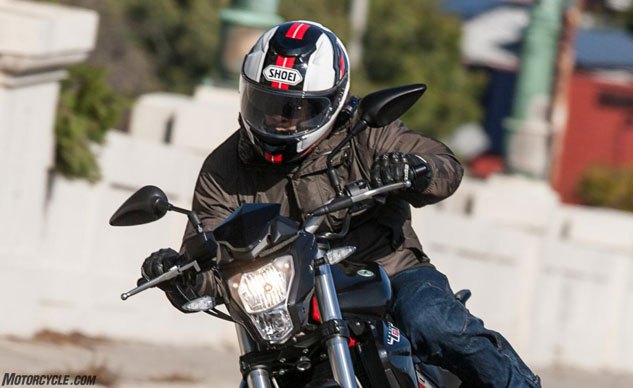

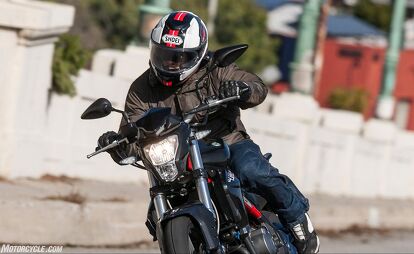
















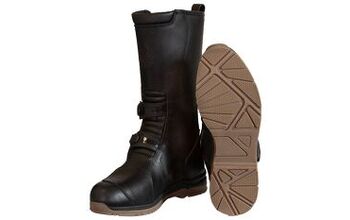


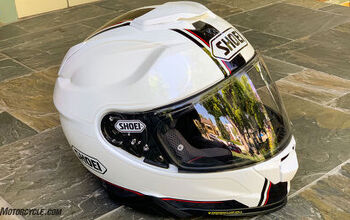










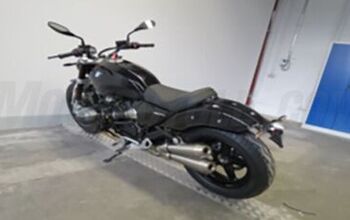



Comments
Join the conversation
Features are great.
But.
I'm enough of a safety geek that before I buy any helmet, I go to the web site run by the UK Government -- https://sharp.dft.gov.uk/co... -- and check to see how the helmet performed in their impact testing scheme.
When I compare the results of the GT-Air to say, a Shoei Qwest, the Quest dramatically outperforms the GT-Air in side impact protection.
If you think about this for a second, it isn't really a shock. To fit all of the mechanism to operate the sun shield inside the helmet, something else had to be removed, and that something was the protective EPS liner.
So if you're ok trading protection for convenience, go right ahead and pay double for one of these lids.
I'm not.
I'll stick with my Qwest and some sunglasses.
I've owned my GT-Air for two years now (really like it) and am now noticing significant wind noise on the left side (and I always ride with ear plugs) that seems to be caused by turbulence. I don't have that same wind noise on right side. I can shrug my shoulder when riding and the wind noise goes away. Makes me think the neck roll isn't tight enough on the left side, or perhaps the buckle is causing turbulence/noise. Couple of
questions: 1) has anyone had this problem and if so were you able fix it? 2) Is it time possible for new (and maybe smaller) cheek pads that would give me a tighter neck roll? 3) Any other suggestions?